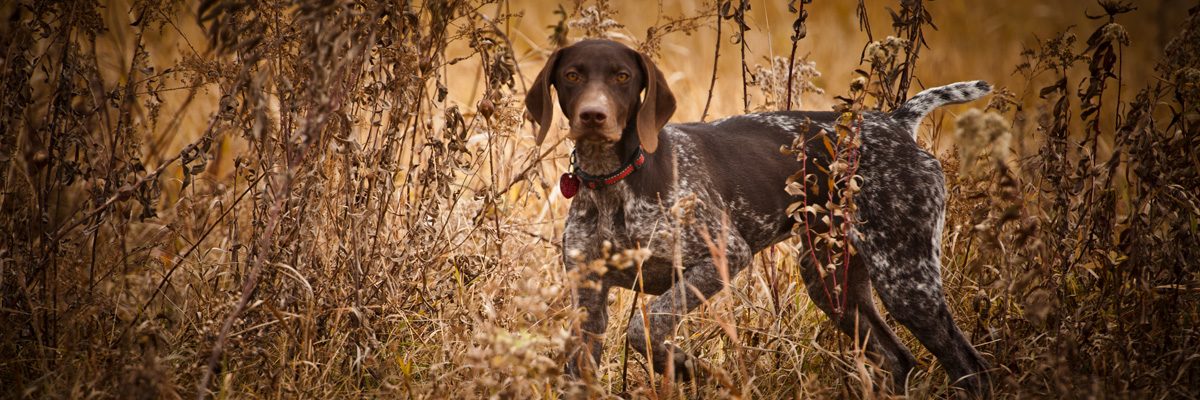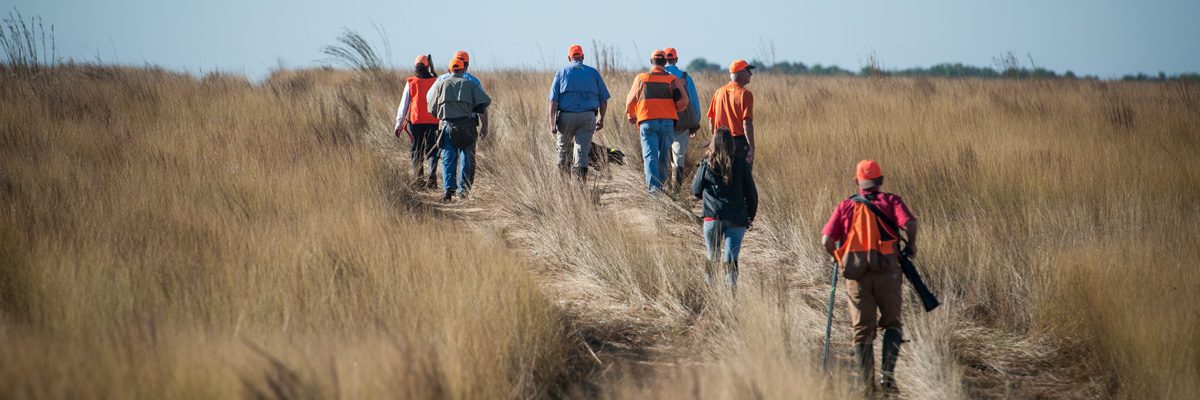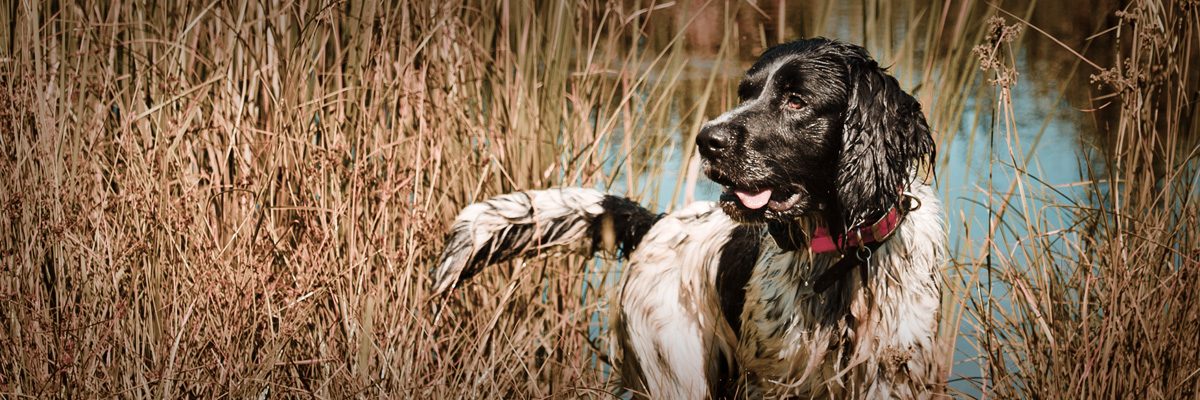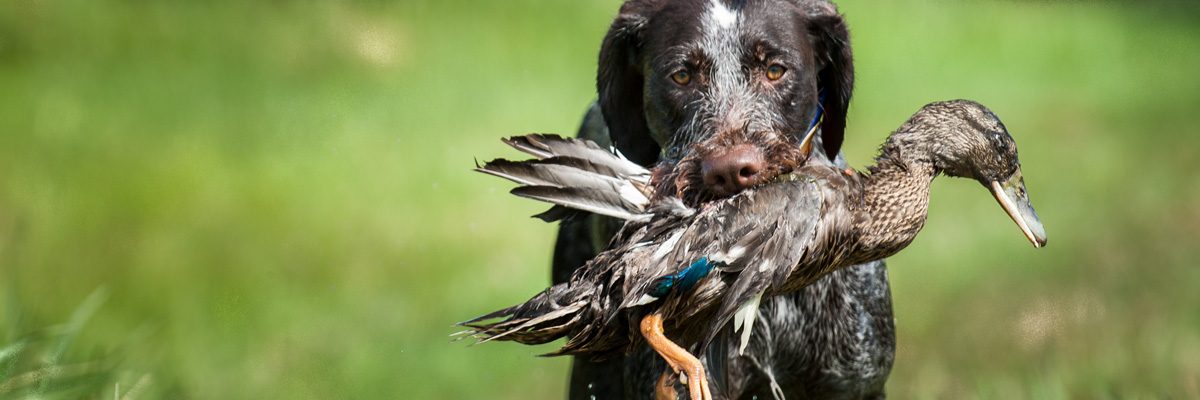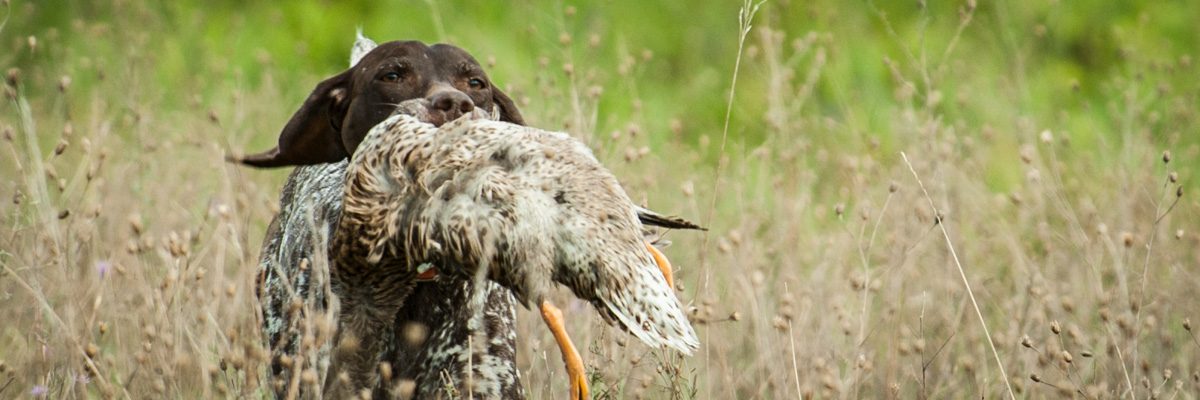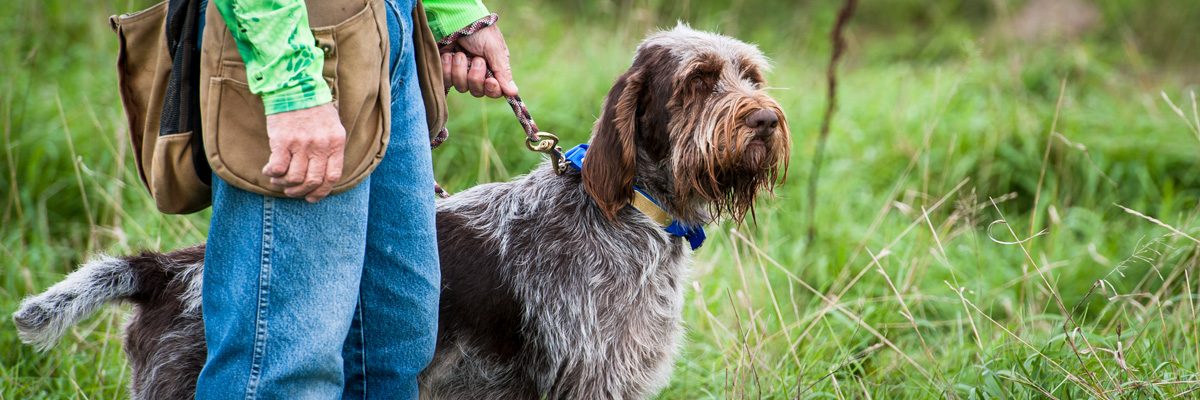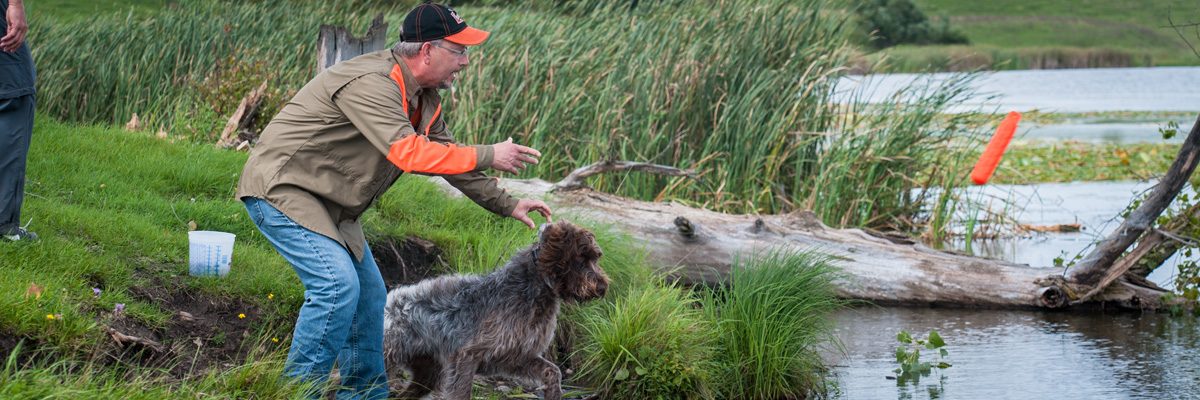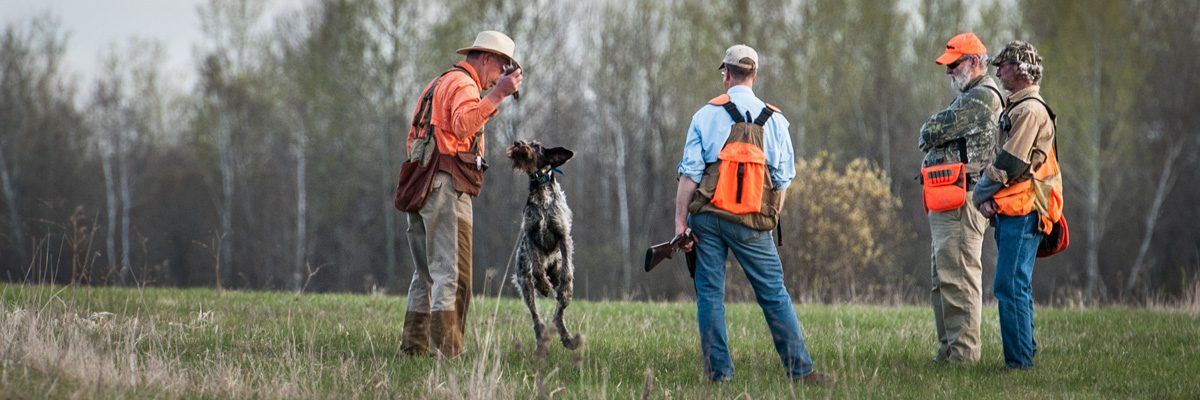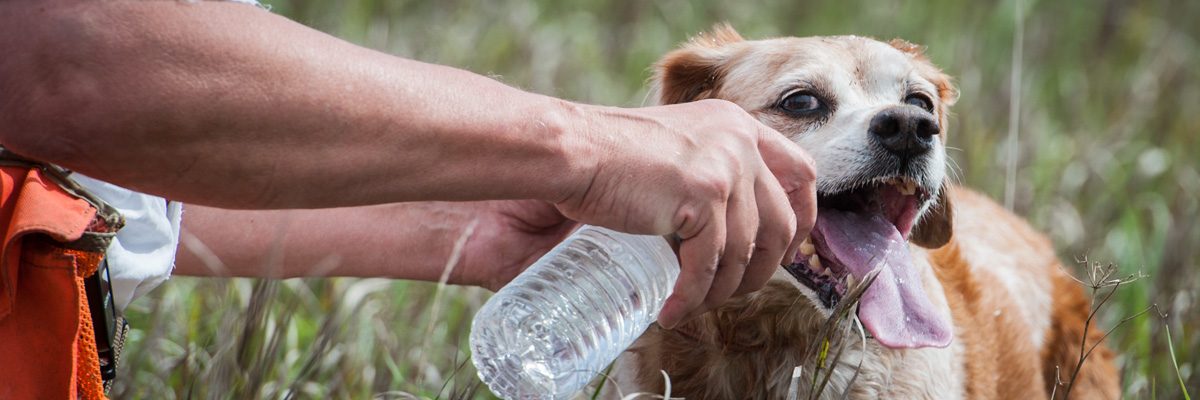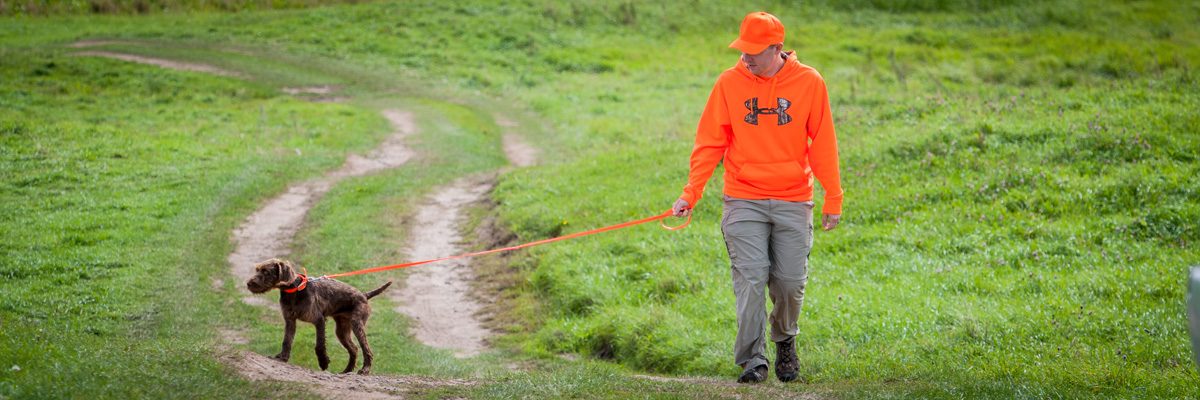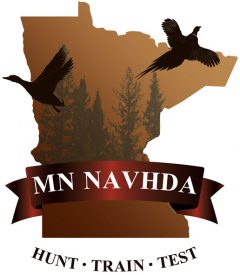This article was posted in the February 2018 issue of NAVHDA’s Versatile Hunting Dog Magazine:
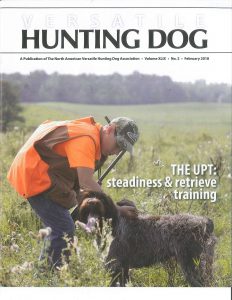
According to the NAVHDA AIMS book, The Utility Preparatory Test (UPT) is designed “to evaluate the dog midway in its training towards becoming a reliable versatile gun dog,” and the Utility Test (UT) is “designed to test a dog’s usefulness to the on-foot hunter in all phases of hunting, both before and after the shot, in field and marsh, and on different species of game.”
For an inexperienced handler, the UPT is a great introduction to the hunting team concept and the different areas of focus for the full UT. There is no age limit for a dog in the UPT, so it can also be a good way to evaluate a dog that missed running a Natural Ability test.
But what about the UPT as a measure of a dog’s usefulness to the hunter? Years ago, I had a Lab and then a Boykin spaniel. I was a novice bird-dog man, but we found, flushed, and shot birds and had fun. With some retrieving and steadiness training, it would have been a lot more fun (and much safer). There were shots taken that should not have been—low-flying birds with dogs on their tails. There was a time in Iowa that I dropped a rooster across a dredge ditch, and the dog refused to go across. It was half a mile to a bridge, and I became the dog on that one mile retrieve. For those of you who do not hunt waterfowl and feel all the water work required of a Utility dog does not apply to your hunting style, think again. Pheasants, grouse and woodcock all live near water, and it seems almost every year one of my dogs retrieves an upland bird from water.
In the NAVHDA UPT, a dog is evaluated across many areas, but, for the purposes of the points I am trying to make with this article, let’s focus on Steadiness (in the field and at the blind) and Retrieving (land and water).
In NAVHDA testing, Field Steadiness is brokendown into four parts as described here:
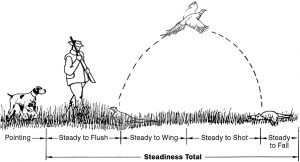
“Steady to Flush” – Judging “Steady to Flush” begins when the dog is aware of the presence of the handler. Think of “Steady to Flush” as behavior during the flushing period. The steady to flush judgment ends when the bird leaves the ground.
“Steady to Wing” – Judging “Steady to Wing” begins when the bird leaves the ground and ends when the gun is fired.
“Steady to Shot” – Judging “Steady to Shot” begins when the gun is fired and ends when the bird hits the ground.
“Steady to Fall” – Judging “Steady to Fall” begins when the bird hits the ground and ends when the dog is sent for the retrieve.
A UPT dog is evaluated only on the first two parts of the sequence-Steady to Flush, and Steady to Wing. Pay special attention to the part under Steady to Wing where it states, “ends when the gun is fired.” In the real world of hunting, a dog that is consistently Steady to Wing is a SAFE dog!
A UPT dog is also expected to retrieve a shot bird, “within a reasonable distance and easily accessible to the handler.” Dredge ditch problem solved!
A UPT dog is expected to remain by the blind in the presence of a thrown duck and a live gunshot until sent for the retrieve. This is a simpler test than the full UT sequence of the handler leaving the blind and the distraction shots, but, for most hunters, the UPT standard would suffice and still garner compliments from your hunting buddies.
On any of the duck retrieves in the UPT, the dog is expected to just bring the duck “within reach of the handler” to receive a 4. Again, still a very useful standard for hunting without the full refinement of a finished retriever that delivers to hand as the UT requires.
As in the UT, a UPT dog must also demonstrate a water search or “duck search.” This portion of the test evaluates a dog’s desire and persistence in searching for downed or wounded game it did not see fall. On the UPT, a dead duck is used, and the dog is generally not expected to search as long or as far out as a UT dog. Still, the real-world usefulness of a dog that can perform this task (even to UPT standards) are crucial when it comes to recovering game.
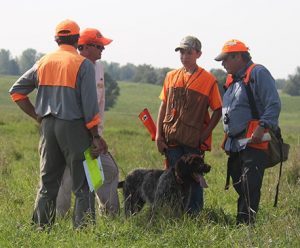
Should you train and test your dog for the UPT, or skip right to the full UT? If you ask that question to a professional trainer, you might be told that that any dog that can prize in the UPT could have easily been trained a bit further to earn a prize in the UT. While this may be true, the reality is that the bulk of NAVHDA membership is made up of novice handlers and amateur trainers, many of whom are training their first dog. For these people, the UPT is a very logical stepping stone in the development of their dog and of themselves as trainers and handlers.
With proper breeding and training, all the NAVHDA breeds have the potential of becoming finished Utility dogs, and I would encourage everyone to keep training toward the UT as an end goal. Your dog deserves it. However, if you made the UPT test your final goal in NAVHDA and trained your dog to those maximum test expectations (Prize I levels), you could quit there and would have a MUCH more reliable hunting dog than most bird hunters.
You also may not have to make the decision of which test to run until just prior to the test. Since the resources needed to test for UPT or UT are very similar, many chapters will allow you to switch from UPT to UT or vice versa, assuming you have already secured a spot in the running order. Check with your test secretary well in advance. Please also consult the NAVHDA AIMS book for the full details of the differences between the UPT test and the UT test.
